Autodesk in Second Life
I just returned from Las Vegas, after having the honor of closing Autodesk CEO Carl Bass' keynote presentation with a Second Life tour of our Crescendo Design Virtual Studio in front of 6,500+ attendees. The presentation concluded with 2 separate live feeds from Second Life, whereby Mr. Bass' avatar joined joined Jon's avatar, Keystone Bouchard for a tour of the studio.
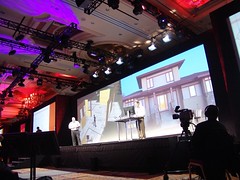
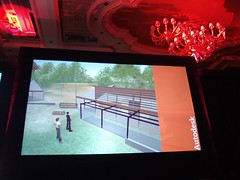
I have also had the unique privilege to be working for Clear Ink as they develop Autodesk's Second Life presence in preparation for this demonstration. During the past few weeks, I have been working with a team of incredibly talented people to determine what this project should consist of.
Our goal was to create a space that would highlight the community, social and collaborative features of Second Life, as well as to encourage visitors to begin exploring the world for themselves. As a result, the architecture of Autodesk Island became more of a backdrop or space instead of a strong central icon. The main greeting area is not a heroic corporate building, but is instead an open air forum; designed to foster and encourage interaction between avatars. The forum is surrounded by kiosks that provide tools, tips and tricks to help get people started, as well as a diverse list of landmarks to both mainland and island destinations.
Aloha Avatars, a service designed to help newbie avatars make a comfortable transition into SL, led by TROI TimTam, kept us on task with retaining the 'Second Life Spirit' throughout the island. A strong connection with landscape elements, the water, and lots of other features help create a familiar and comfortable atmosphere. As Autodesk's program elements began settling into the island's landscape, the relaxed and inviting sense of place remained.
One of the concepts we explored (interpreted, designed and built by Scope Cleaver), was to express both a grounded, representational component of block steel and glass, juxtaposed against a light, airy, flowing virtual element we called the aurora spires. The idea was to provide a comfortable and familiar point of departure, which embraces an element clearly defiant of real world physics; indicative of the limitless potential of a virtual environment. However abstract and steep in theory the end result may be, it was my hope that it would read as an invitation for an eventual transition into a new language of virtual architecture - liberated from exclusively representational iconography.
As Chip Poutine reported in 3pointD, Clear Ink's Kiwini Oe was able to develop a DWF import tool that allows 2D CAD drawings to be dynamically updated through Autodesk's Freewheel, directly in Second Life. Also on display is Adrian Herbez's Maya import tool, which allows models to be built using a prim-based plug-in for Maya, and imported into Second Life. These features of Autodesk's demo area represent a taste of things to come, as we continue to develop ways to make Second Life a more fluid and automatic tool for professional use.
The island is currently only open to Autodesk University attendees, but we expect to open the island to the public sometime after the conference.
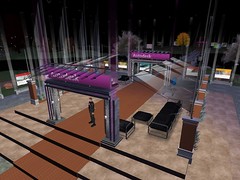
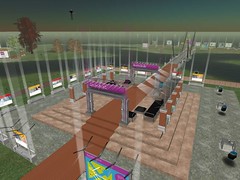
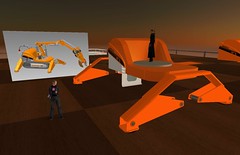
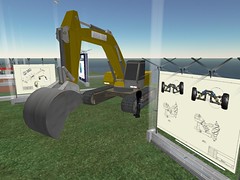
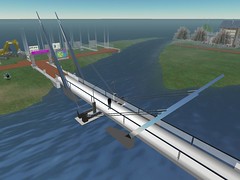
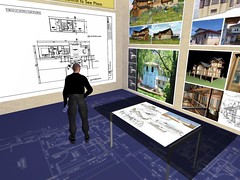

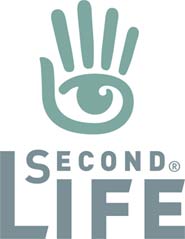
5 Comments:
昆明旅游资讯网提供昆明酒店预定 丽江酒店预定 云南旅游 丽江旅游 大理旅游 西双版纳 旅游线路 泸沽湖 香格里拉 云南旅游论坛 旅游信息 云南国旅 昆明旅游景点 云南省旅游 特价酒店 特价机票 云南游 昆明旅游网
昆明旅游资讯网提供昆明酒店预定 丽江酒店预定 云南旅游 丽江旅游 大理旅游 西双版纳 旅游线路 泸沽湖 香格里拉 云南旅游论坛 旅游信息 云南国旅 昆明旅游景点 云南省旅游 特价酒店 特价机票 云南游 昆明旅游网
Visit today Hypnosis Easy
Visit us today to learn more about speed reading
Visit us today to learn more about the Showtime Rotisserie
Post a Comment
<< Home